Jeep Compass vs Polestar 4 – Which model is better for everyday use?
Two cars, one duel: Jeep Compass meets Polestar 4.
Which one wins in performance, efficiency and value for money? Find out now!
Costs and Efficiency:
Looking at overall running costs, both models reveal some interesting differences in everyday economy.
Jeep Compass has a convincingly advantage in terms of price – it starts at 34200 £, while the Polestar 4 costs 53100 £. That’s a price difference of around 18857 £.
In terms of energy consumption, the advantage goes to the Jeep Compass: with 17.50 kWh per 100 km, it’s slight more efficient than the Polestar 4 with 17.80 kWh. That’s a difference of about 0.30 kWh.
As for range, the Polestar 4 performs somewhat better – achieving up to 620 km, about 120 km more than the Jeep Compass.
Engine and Performance:
Power, torque and acceleration are the classic benchmarks for car enthusiasts – and here, some clear differences start to show.
When it comes to engine power, the Polestar 4 has a significantly edge – offering 544 HP compared to 240 HP. That’s roughly 304 HP more horsepower.
In acceleration from 0 to 100 km/h, the Polestar 4 is clearly quicker – completing the sprint in 3.80 s, while the Jeep Compass takes 7.30 s. That’s about 3.50 s faster.
There’s no difference in top speed – both reach 200 km/h.
There’s also a difference in torque: Polestar 4 pulls clearly stronger with 686 Nm compared to 345 Nm. That’s about 341 Nm difference.
Space and Everyday Use:
Beyond pure performance, interior space and usability matter most in daily life. This is where you see which car is more practical and versatile.
Both vehicles offer seating for 5 people.
In curb weight, Jeep Compass is decisively lighter – 1575 kg compared to 2230 kg. The difference is around 655 kg.
In terms of boot space, the Jeep Compass offers barely noticeable more room – 550 L compared to 526 L. That’s a difference of about 24 L.
In maximum load capacity, the Polestar 4 performs hardly perceptible better – up to 1536 L, which is about 149 L more than the Jeep Compass.
When it comes to payload, Jeep Compass barely noticeable takes the win – 470 kg compared to 455 kg. That’s a difference of about 15 kg.
Who comes out on top?
Overall, the Polestar 4 shows itself to be leaves the rival little chance and secures the title of DriveDuel Champion.
It convinces with the more balanced overall package and proves to be the more versatile choice for everyday use.
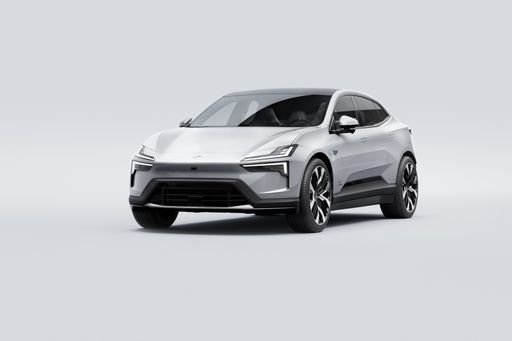
Polestar 4
Jeep Compass
The Jeep Compass combines a rugged aesthetic with modern sophistication, making it a standout choice in the compact SUV segment. Its robust design is complemented by a comfortable interior that offers ample space and cutting-edge technology for a seamless driving experience. Whether tackling urban environments or venturing off-road, the Compass provides versatility and reliability, embodying the adventurous spirit synonymous with the Jeep brand.
details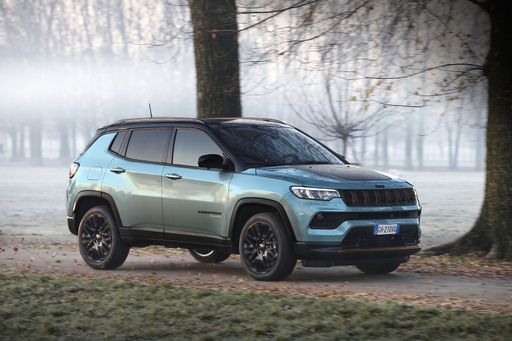 @ media.stellantis.com
@ media.stellantis.com
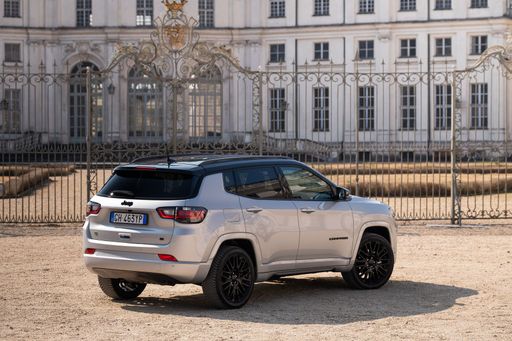 @ media.stellantis.com
@ media.stellantis.com
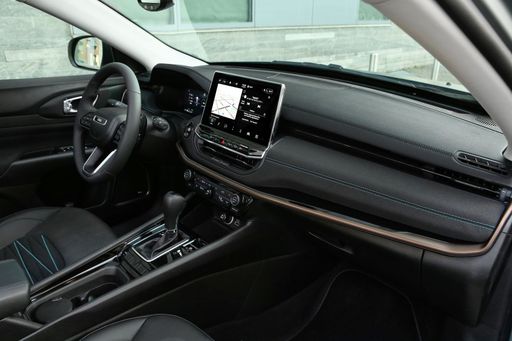 @ media.stellantis.com
@ media.stellantis.com
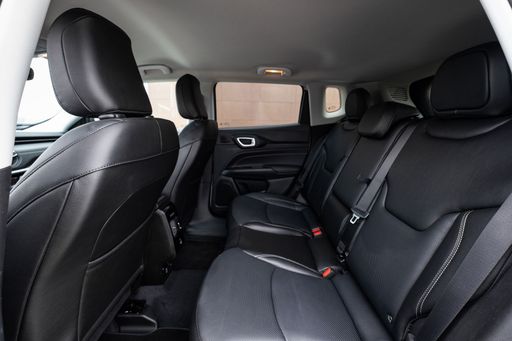 @ media.stellantis.com
@ media.stellantis.com
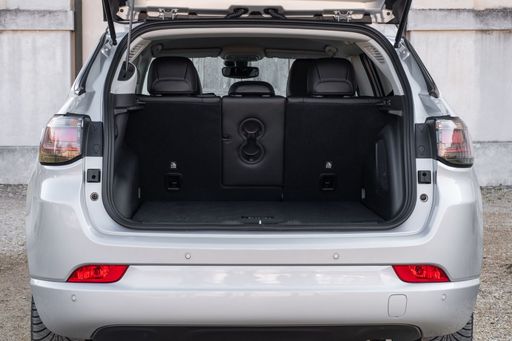 @ media.stellantis.com
@ media.stellantis.com
Polestar 4
The Polestar 4 embodies a seamless blend of cutting-edge technology and sophisticated design, establishing itself as a prominent contender in the modern electric vehicle market. Its elegant exterior lines are complemented by an interior that prioritises both luxury and sustainability, offering a serene driving experience. With its focus on innovation, the Polestar 4 continues to push the boundaries of performance, setting a new standard for what an electric car can achieve.
details @ media.polestar.com
@ media.polestar.com
 @ media.polestar.com
@ media.polestar.com
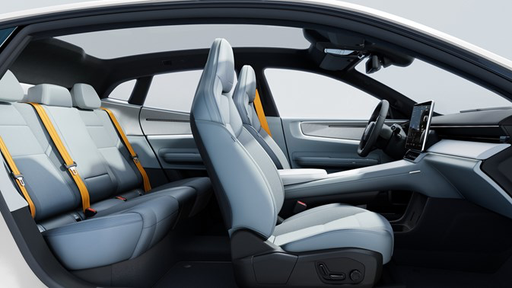 @ media.polestar.com
@ media.polestar.com

|

|
|
|
|
Costs and Consumption |
|
|---|---|
|
Price
34200 - 46900 £
|
Price
53100 - 59900 £
|
|
Consumption L/100km
2 - 5.9 L
|
Consumption L/100km
-
|
|
Consumption kWh/100km
17.50 kWh
|
Consumption kWh/100km
17.8 - 18.7 kWh
|
|
Electric Range
36 - 500 km
|
Electric Range
590 - 620 km
|
|
Battery Capacity
74 kWh
|
Battery Capacity
94 kWh
|
|
co2
0 - 133 g/km
|
co2
0 g/km
|
|
Fuel tank capacity
36 - 55 L
|
Fuel tank capacity
-
|
Dimensions and Body |
|
|---|---|
|
Body Type
SUV
|
Body Type
SUV
|
|
Seats
5
|
Seats
5
|
|
Doors
5
|
Doors
5
|
|
Curb weight
1575 - 2198 kg
|
Curb weight
2230 - 2355 kg
|
|
Trunk capacity
420 - 550 L
|
Trunk capacity
526 L
|
|
Length
4404 - 4552 mm
|
Length
4840 mm
|
|
Width
1819 mm
|
Width
2008 mm
|
|
Height
1629 - 1675 mm
|
Height
1534 mm
|
|
Max trunk capacity
1230 - 1387 L
|
Max trunk capacity
1536 L
|
|
Payload
465 - 470 kg
|
Payload
455 kg
|
Engine and Performance |
|
|---|---|
|
Engine Type
Petrol MHEV, Plugin Hybrid, Electric
|
Engine Type
Electric
|
|
Transmission
Automatic
|
Transmission
Automatic
|
|
Transmission Detail
Dual-Clutch Automatic, Automatic Gearbox, Reduction Gearbox
|
Transmission Detail
Reduction Gearbox
|
|
Drive Type
Front-Wheel Drive, All-Wheel Drive
|
Drive Type
All-Wheel Drive, Rear-Wheel Drive
|
|
Power HP
130 - 240 HP
|
Power HP
272 - 544 HP
|
|
Acceleration 0-100km/h
7.3 - 10.3 s
|
Acceleration 0-100km/h
3.8 - 7.1 s
|
|
Max Speed
180 - 200 km/h
|
Max Speed
200 km/h
|
|
Torque
230 - 345 Nm
|
Torque
343 - 686 Nm
|
|
Number of Cylinders
4
|
Number of Cylinders
-
|
|
Power kW
96 - 177 kW
|
Power kW
200 - 400 kW
|
|
Engine capacity
1199 - 1469 cm3
|
Engine capacity
-
|
General |
|
|---|---|
|
Model Year
2024 - 2025
|
Model Year
2024
|
|
CO2 Efficiency Class
D, B, A
|
CO2 Efficiency Class
A
|
|
Brand
Jeep
|
Brand
Polestar
|
What drivetrain options does the Jeep Compass have?
The Jeep Compass is available as Front-Wheel Drive or All-Wheel Drive.
The prices and data displayed are estimates based on German list prices and may vary by country. This information is not legally binding.
